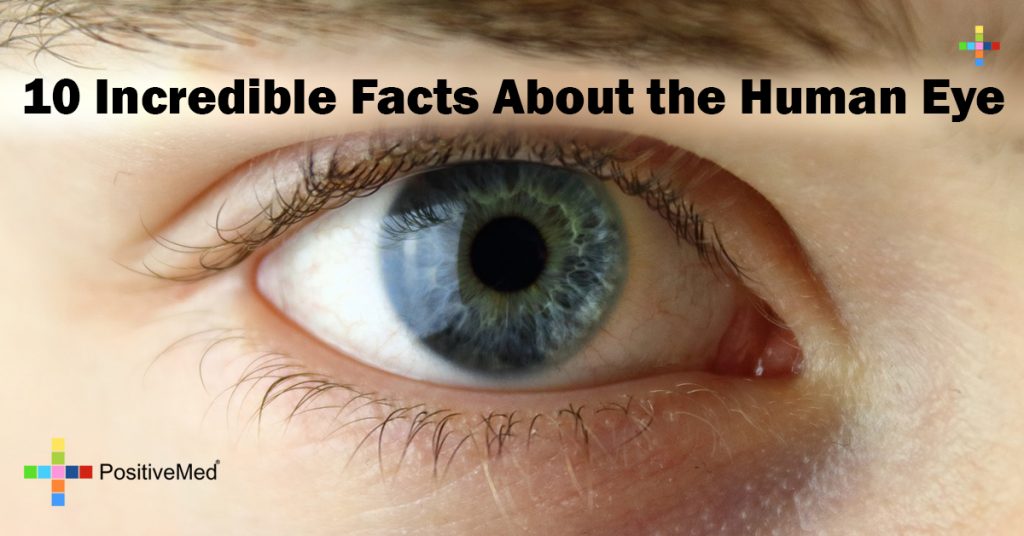
10 Incredible Facts About the Human Eye
Did you know that your interpretation of colors depends on how your eyes function? You have probably heard many interesting facts about the human body already, today we will talk about one of the most interesting, the eyes. The ability to see our beautiful world is a true gift, but there is more to the human eye than sight.

Let’s take a look at these eye facts you may not know:
• Your eyes actually see everything upside down
The lens in your eye bends light rays so that they focus exactly on the retina, then turn things upside down while focusing the images, your brain turns the images right-side up, and that is how a 3D image is created by your brain. The entire process is too fast to notice.
• Images are halved and distorted
One half of the image arrives in half of your brain, while the corresponding half arrives at the other half. Your brain then scrambles the images to compose the full picture that you see.
• The length of your eye decides if you are farsighted, nearsighted, or neither
Nearsighted people have longer eyeballs and can see things better close-up, while those with shorter eyeballs are farsighted can see better from far away.

• Eyes can be sunburned
The human eye can suffer sun damage, it’s a different process from what happens to your skin, a prolonged process that happens over time. Wear UV protective sunglasses when in sunlight, not just in summer, during all seasons. An added benefit of sunglasses is protecting the delicate skin around your eyes from wrinkles!
• We blink, a lot
We blink around 25,000 times each day, 15-20 times a minute. Research from Japan’s Osaka University found that blinking gives our mind a chance to rest and ‘go offline.’ Blinking is a necessary act, most often involuntary, and a defense mechanism to protect your eyes.
• Human retinas can’t detect the color red
Our retinas have red, blue, and green color receptors, however the red receptor can only detect yellow-green and the green receptor detects blue-green. Your brain combines these signals and turns them into red.
• Your eyes can improve with age
Your eyes can get better with age but it’s not a good sign, it’s a sign that something is wrong with your health. Diabetes is one that can make your sight better by improving your close-up vision. Consult your doctor with any major changes in your eyesight.
• Staring directly into the sun can make you blind
Remember seeing how the rays of the sun can burn a piece of paper using a magnifying glass? This is what can happen to your eyes when you stare into the sun. The mechanism that causes the lens to focus the sun rays on the retina will burn a spot in the retina which causes permanent damage. This is why there are special viewers for a solar eclipse.
• All blue-eyed people stem from one ancestor
If you have blue eyes, the next time you meet another blue-eyed person don’t think of him/her a stranger, but a distant relative. Everyone with blue eyes descended from one person who lived near the Black Sea 6000 years ago.
• Blinking time
In addition to the hours you spend asleep, you spend 10% of your waking hours with your eyes closed.





